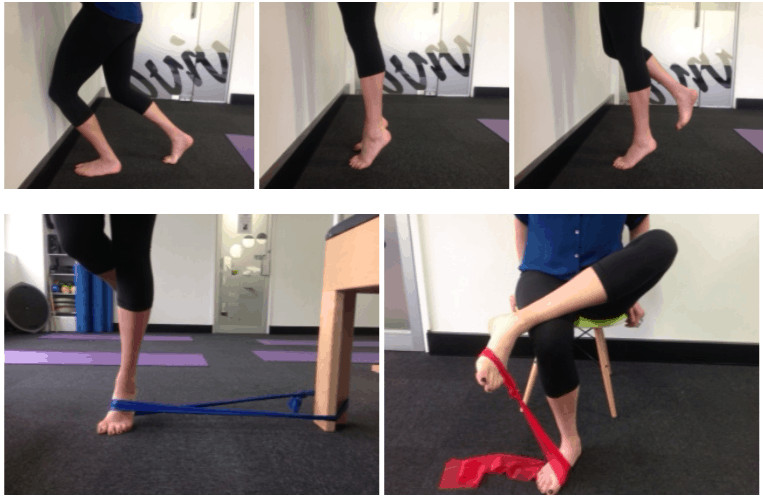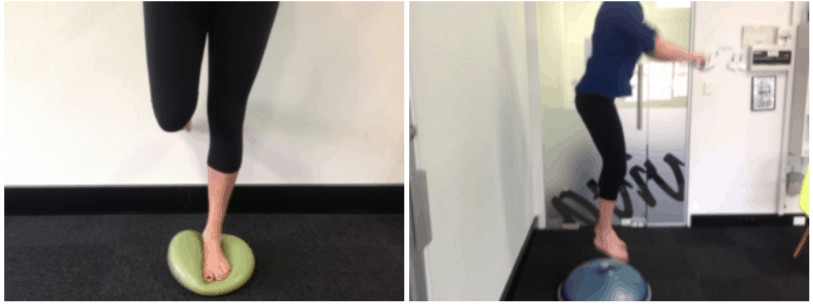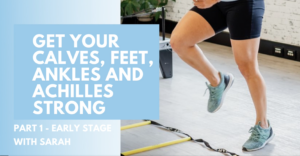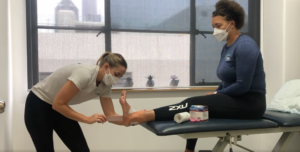Everything You Need To Know About Your Ankle Injury
Ankle Sprains and Rehabilitation
Ankle sprains are a common sporting injury, but can be a lot more problematic to rehabilitate than the often simple mechanism of injury.
Most ankle sprains are of the lateral ligaments and occur when the foot rolls inwards (inversion sprain). This tends to happen when an individual lands awkwardly while jumping, or with sudden change of direction such as required for sports like netball and football.
You may feel a sense of the ankle “giving way”, and you may hear a “pop” or crack.
Anatomy
The lateral ligament consists of three parts: anterior talofibular ligament (ATFL), calcaneofibular ligament (CFL) and posterior talofibular ligament (PTFL).
The ATFL is most commonly compromised with an inversion sprain. It is quite rare to roll the ankle outwards (eversion sprain), though the deltoid ligament (medial ligament) can be “crushed” with a severe inversion sprain.
If you have difficulty putting any weight through the foot/ankle immediately after injury, this may mean you have sustained a bone fracture as well. Fractures are most commonly of the lateral malleolus (avulsion fracture) or the distal fibula, but can also be of the navicular bone or base of the 5th metatarsal. Your Physiotherapist can refer you for an X-Ray to check if there is a fracture if they are concerned following examination.
Early Management
Initial management focuses on the PRICEM principle of Protection, Rest, Ice, Compression, Elevation, Medication.
- Protection may involve use of crutches or if a fracture is detected then immobilisation in a moon boot.
- Relative rest is recommended, though some gentle “ankle pumps” of flexing the ankle forwards and backwards in the early stages is recommended to help reduce swelling.
- Regular icing (either ice pack or placing the whole foot and ankle in an ice bath) is recommended to help manage swelling.
- Compression will also assist in reducing swelling and subsequent pain, a tubigrip is usually a good way to provide an even compression through the foot and ankle.
- To reduce swelling pooling in the foot and ankle, elevation of the leg throughout the day is recommended.
- Medication such as Panadol may be necessary to control pain. Anti-inflammatory medication, such as Voltaren, is not recommended in the first 72 hours as it can impact the normal inflammatory process, which is necessary for the process of healing to begin. If the ankle is grossly swollen following this, use of a non-steroidal anti-inflammatory medication may be recommended for a short period of time (as long as there is no fracture present).
Rehabilitation
Early physiotherapy management will focus on reduction of pain and swelling and restoring normal range of movement.
Techniques your Physiotherapist may use include soft tissue massage and joint mobilisations.
Following this, your Physiotherapist will start focusing your rehabilitation on restoring strength in the lower leg – not only of the muscles around the ankle, but also higher up the chain including muscles around the hip and core, which are important for long term stability and return to sport.
It is also important to incorporate proprioceptive exercises into your rehabilitation program. Proprioception is our awareness of where our body is in space. Following ankle sprain injury, exercises to challenge our balance and muscle control around the ankle, hip and core will help to reduce the risk of recurrent strains by improving our reaction time to unexpected movements or unstable surfaces.
Calf Strength is really important when it comes to returning to sport with confidence. We tend to see this as a graded program including isometrics, and then up to plyometrics and high loading exercises. This series of 3 videos will give you an idea of how we progress them in the clinic.
Finally, exercises specific to your sport such as jumping, cutting and pivoting will be incorporated to your program. It is important to continue specific ankle rehabilitation exercises in the long term even once you’re back on the netball court or footy field to minimise the risk of re-injury.
Taping and Braces
In the early stages of returning to sport, it is often recommended to have your ankle taped or wear a brace such as the ASO ankle brace.
Some individuals choose to tape/brace the non-injured ankle prophylactically so that there is a sense of symmetry.
Here’s our video from The Viva Hub to see how we as physiotherapists like to tape an ankle for ATFL and CF ligament sprains.
How long to recover?
Each ankle sprain will differ slightly in the rehabilitation process and time for recovery and return to sport will vary depending on individual factors such as swelling management, previous history of injuries and underlying strength and stability. That said, ligaments take at least 6 weeks to heal with scar tissue lay down and maturation. As a guide;
Grade 1 – Mild Ankle Sprain
Strain or tear of a few of the fibres within the ligament. Swelling and bruising should have dissipated within 1-2 weeks and by 3 weeks pain free movement day to day activities such as walking. However, for higher demand movements such as fast change of direction, the full 6 weeks are often needed to retrain stability and proprioception.
Although referred to as a “mild” ankle sprain, if not rehabilitated correctly these ankles often end up problematic in the long term due to joint stiffness and muscle strength deficits. This can lead to compensated movement patterns of the knee and hip, potentially causing over-use injuries of other joints in the future.
Grade 2 – Moderate Ankle Sprain
Moderate ankle sprains, such as a ruptured ATFL and torn CFL, typically require 4-6 weeks to recover. It’s recommended to wait at least 4-6 weeks before considering returning to sports drills, to ensure optimal strength of the new scar tissue.
Grade 3 – Severe Ankle Sprain
A complete rupture of the ankle ligament may require surgery. It can also include fractures of the bones. Normally takes 6 to 12 weeks to rehabilitate, but varies depending on the severity and complexity of the injury.
FINAL COMMENT
This blog has only touched on the surface of ankle sprain injuries – there are a lot of small bones and joints in the ankle/foot complex that can potentially be injured following the “common ankle sprain”.
As such, I recommend you have your injury properly assessed in order to have the best possible outcomes and get you back on your feet playing netball, football or chasing the kids in the park as soon as possible.
If you need advice or help feel free to book a 1:1 appointment with one of our pain physios.



